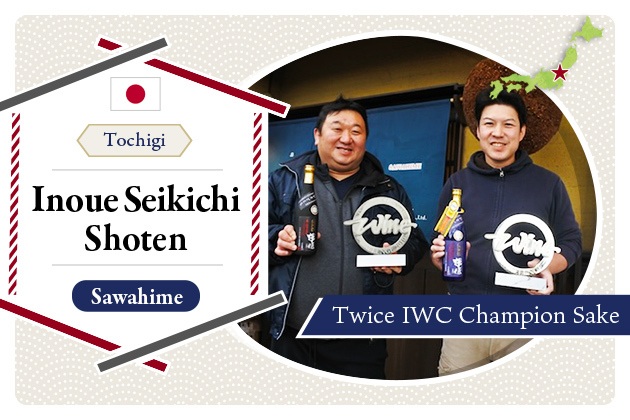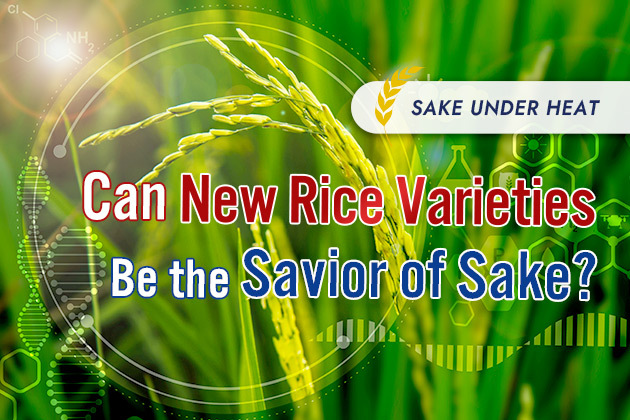
2024.07
05
Kyokai Yeast, that Underpin Sake Brewing
Yeast is essential for the alcoholic fermentation of sake. There are many different types of yeast, and the aroma and flavour of the finished sake will vary depending on which yeast is used. Recently, the yeasts used in sake have become increasingly publicised on labels, and not only sake brewers but also drinkers are now paying more attention to them. This article describes the Kyokai Yeast, which is used in most Japanese sake.
*Kyokai Yeast is a registered trademark of the Brewing Society of Japan.
What is Kyokai Yeast?
Kyokai Yeast is a brewing yeast distributed by the Brewing Society of Japan. In addition to sake yeast, there are also Kyokai Yeasts for shochu and wine.
Yeast is a micro-organism that breaks down sugar into alcohol (ethanol) and carbon dioxide during the sake-making process, and influences the aroma and flavour of the sake.
It is possible to make sake with naturally available yeast (wild yeast), but the risk is that wild yeast is unstable, does not always reproduce in the same way and the quality of the finished sake is difficult to stabilise.
The Brewing Society of Japan therefore started to distribute Kyokai Yeast, working on the pure cultivation of high-quality yeast with the aim of stabilising quality. Since the start of distribution in 1906, several types of yeast have been distributed domestically and internationally, contributing to quality improvement.
Kyokai Yeast is supplied in the form of ampoules and dried powder. The system allows breweries and other brewers with a brewing licence to download an order form and fax it in.
Ampoules are small containers, in which yeast is sealed and distributed. They are hygienic and suitable for maintaining quality, as the yeast is shielded from the external environment. One ampoule contains approximately 20 billion yeast cells and can produce 830-1,660 bottles of 1.8L of junmai sake.
Dried yeast is yeast that has been dried and powdered. The use of dried yeast enables the brewing process to be omitted and the brewing process to begin, thus shortening the production period and reducing costs. It can also be stored for a long time at room temperature, making it convenient for off-plan brewing.
What do the Kyokai Yeast numbers mean?
The order in which they were discovered in principle
Kyokai Yeasts are distinguished by a number, such as 'No. 6' or 'No. 10'.
In principle, these numbers are assigned in the order in which the yeasts were discovered, but there are exceptions. For example, No. 9 was discovered earlier than No. 8, but was given the number '9' because it was not distributed as a Kyokai Yeast until later than No. 8.
Also, some of the Kyokai Yeasts are no longer distributed.
For example, the No. 1 yeast isolated from the Sakura Masamune is no longer distributed as Kyokai Yeast. No. 2, isolated from Gekkeikan, No. 3 from Suishin Yamane Honten, No. 4 from a brewery in Hiroshima and No. 5 from Kamotsuru Shuzo are also no longer distributed.
In addition, there are also cases where the distribution of relatively newer, such as No. 8, No. 12 and No. 13 yeasts, has been discontinued.
01 is marked non-foaming yeast
Kyokai Yeasts with the number '01', such as No. 601 and No. 1401, are commonly known as non-foaming yeasts, as they do not produce high foam during fermentation. They are named by adding '01' to the original mutant yeast (e.g. No. 601 is a foam-free mutant strain of No. 6, No. 1401 is a foam-free mutant strain of No. 14).
Full-scale research on non-foaming yeast began in 1963. Later, in 1971, Kyokai No. 701, a foamless mutant strain of Kyokai No. 7, was isolated and distribution began.
With normal yeast, high foam forms above the liquid level of the moromi mash as fermentation progresses, and the overall volume of the mash becomes higher. The bubbles contain a lot of yeast, so if the foam overflows the tank, fermentation slows down. To prevent this, the tanks need to be filled to capacity, which is costly and wasteful.
Non-foaming yeast can then be used to prepare larger quantities. In addition, with foam-free yeast, the tanks are easier to clean, which reduces the workload. On the other hand, high foam has a history of being treated as an indication of the state of the moromi, so some brewers argue that using foam-free yeast makes it difficult to determine the state of the mash.
In addition to non-foaming yeast, there are now also a number of other types of yeast distributed, such as low urea-producing Kyokai Yeast (KArg yeast), which suppresses the production of ethyl carbamate, which has been pointed out as a possible carcinogen, and high malic acid producing Kyokai Yeast (No. 28 and No. 77), used to make highly acidic sake in which malic acid is the main ingredient and other yeasts with different characteristics are distributed.
Kyokai Yeast still in use today
Finally, let's look at the main Kyokai Yeast in use today and their main characteristics.
| # | Characteristics |
|---|---|
| No. 6 / 601 | Characterized by a mild, clear aroma and a tendency to produce savory sake. Strong fermentation power. Also called ‘Aramasa Yeast' because it was isolated from Aramasa Shuzo in Akita. |
| No. 7 / 701 | Currently the most widely used of all Kyokai Yeasts. Strong fermentation power that brings a gorgeous aroma. Also called 'Masumi Yeast' because it was isolated from Miyasaka Brewery's 'Masumi'. |
| No. 8 | High acidity brings a rich, mellow flavour. Although distribution has already ended, it is still used by several breweries. |
| No. 9 / 901 | A low-temperature, long-fermentation ginjo yeast that produces extremely floral ginjo aromas. Until the introduction of high ethyl caproate-producing strains, it was the standard yeast used for competition sake. Selected from the Kumamoto Sake Brewing Research Institute, which brews Koro, and is also known as Kumamoto Yeast or Koro Yeast. |
| No. 10 / 1001 | Long fermentation at low temperature, resulting in high ginjo aroma. Low acidity. Also known as ‘Meiri Ogawa Yeast', as it was isolated from several yeasts in the Tohoku region by Dr Chikara Ogawa, vice-president of Meiri Shurui, Ibaraki. |
| No. 11 | A mutant strain of No. 7, slightly more acidic than No. 7, rich in malic acid. Less amino acids and stronger alcohol tolerance. Currently not widely used. |
| No. 14 / 1401 | Produces high levels of isoamyl acetate, leading to banana-like aromas. Low acidity and ferments well at low temperatures. Also called ‘Kanazawa Yeast' because it was isolated in a brewery in Kanazawa. |
| No. 1501 | Long fermentation at low temperatures, resulting in high ethyl caproate production and high ginjo aroma. Low acidity. Akita Hana Yeast (AK-01), created through joint research between Akita Prefecture and the Akita Sake Brewers Association, was adopted as the Kyoikai Yeast. Formerly Kyokai No. 15. |
| No. 1601 | Produces high levels of ethyl caproate, resulting in a high ginjo aroma. Low acidity. Less used since distribution of No. 1801 began. |
| No. 1701 | Produces high levels of isoamyl acetate and ethyl caproate, resulting in a balanced ginjo aroma. Strong fermentation power. Less used since the start of distribution of No. 1801. |
| No. 1801 | Produces high levels of isoamyl acetate and ethyl caproate, resulting in a balanced ginjo aroma. Lowest production of isoamyl alcohol, which is the source of musky aroma, of all the yeasts. Strong fermentation power. |
| No. 1901 | Produces very little urea, which is responsible for ethyl carbamate production. Produces high levels of isoamyl acetate and ethyl caproate, resulting in a well-balanced ginjo aroma. |
| Red Sake Yeast | Derived from No. 10. The yeast develops a red color and is used to make pink-colored nigori sake. It has low fermentation power and produces little acid. |
*For more information on isoamyl acetate and ethyl caproate:
Summary
For sake consumers, yeast is often seen as the main contributor for the aroma in sake, but as can be seen from its history and the yeasts used today, for sake brewers, yeast is a raw material that has a significant effect on brewing, such as how alcohol fermentation takes place.
The line-up of Kyokai Yeast has changed dramatically in response to the needs of sake brewers, and this has also brought about changes in the way sake is brewed. It can be said that the evolution of yeast is also the evolution of sake.
References
- Kyokai Kobo (Brewing Society of Japan)
- Kumamoto’s yeast (Kumamoto Brewers Association)
- Sake Glossary: Kyokai kobo, The Society for Nada Sake Research
- Characters of Kyokai No. 10 Yeast, Hiroshi IWATA, et al. (Office of Technical Officers, Kantou Shin-etsu Regional Taxation Bureau), Journal of the Brewing Society of Japan 85-7, 1990
- Kyokai Yeast No. 14 (Kanazawa Yeast), Hokuriku Brewing Technology Research Association, Journal of the Brewing Society of Japan 90-9, 1995
- Kyokai Yeast No. 15 (Akita-ryu han kobo), Kyuichi Saito, Journal of the Brewing Society of Japan 91-9, 1996
- Kyokai Yeast No. 1701, Masaaki Inahashi, Journal of the Brewing Society of Japan 96-10, 2001
- Kyokai Yeast No. 1801, Kiyoshi Yoshida, Journal of the Brewing Society of Japan 101-12, 2006
- About Kyokai Yeast No. 1901 (KArg1901): Non-urea producing high ester yeast for sake brewing, Hirokazu Hasuda, Journal of the Brewing Society of Japan 109-8, 2014
- OMOTENASHI-NO-MOTOI (Japanese ver.), FBO, 2019
- NIHONSHU-NO-MOTOI The Textbook for KIKISAKE-SHI (Japanese ver.), FBO, 2018
- Textbook for J.S.A. SAKE DIPLOMA Second Edition (Japanese ver.), Japan Sommelier Association, 2020
Pickup Articles
2019.01.18
2019.01.25
Trending Articles
Popular Articles
Recent Articles













